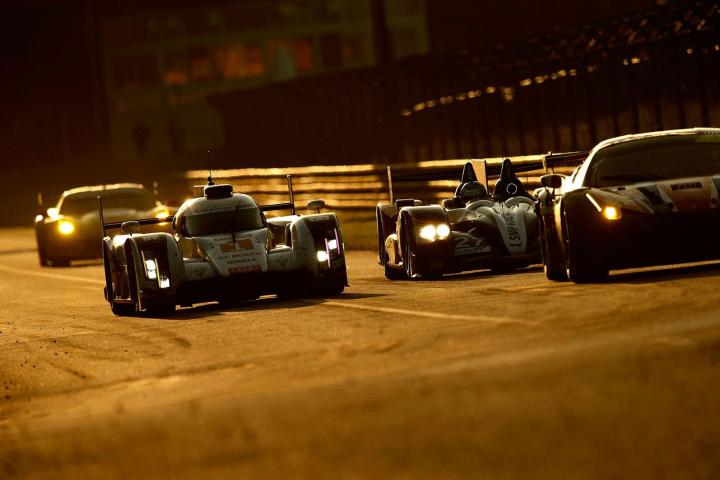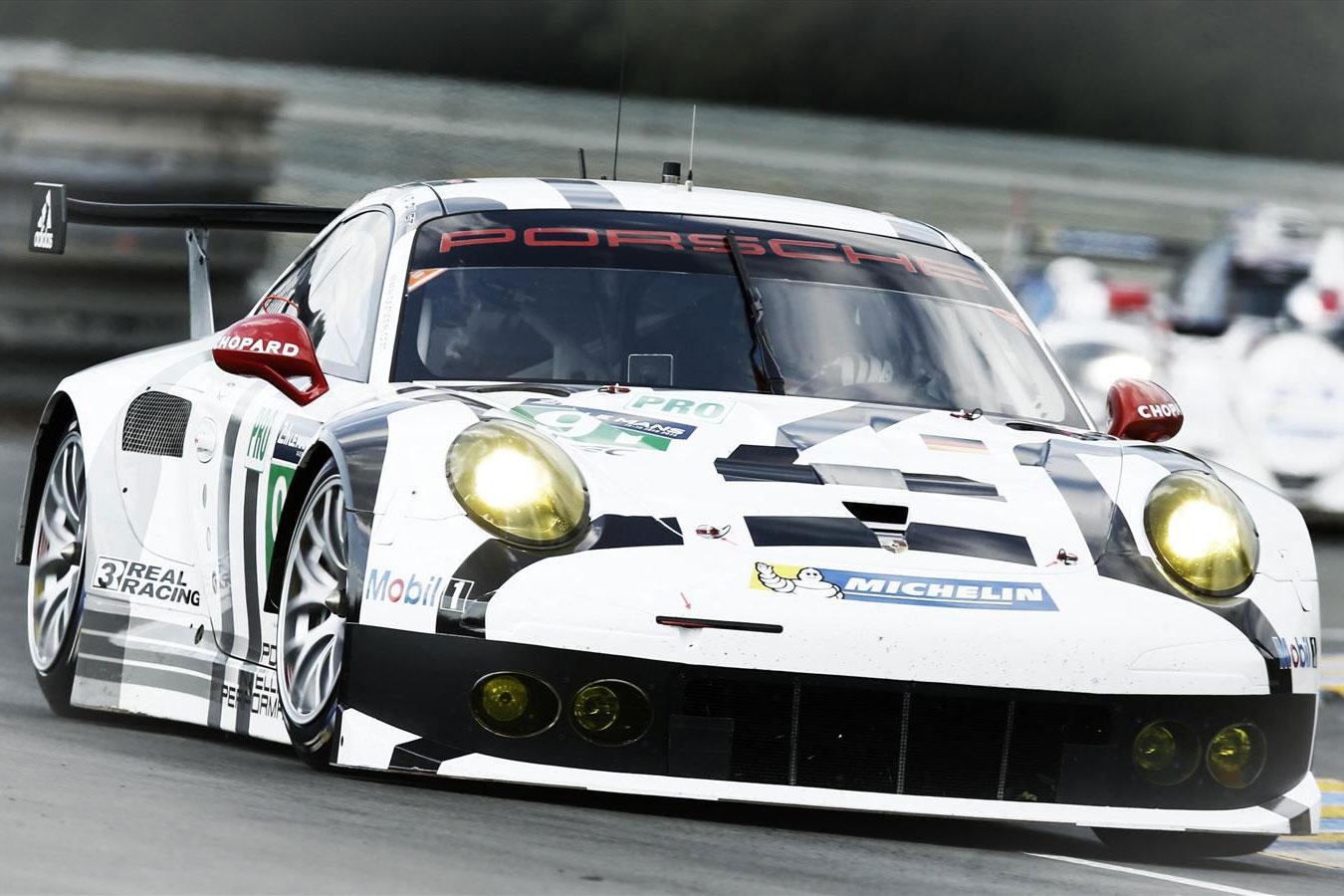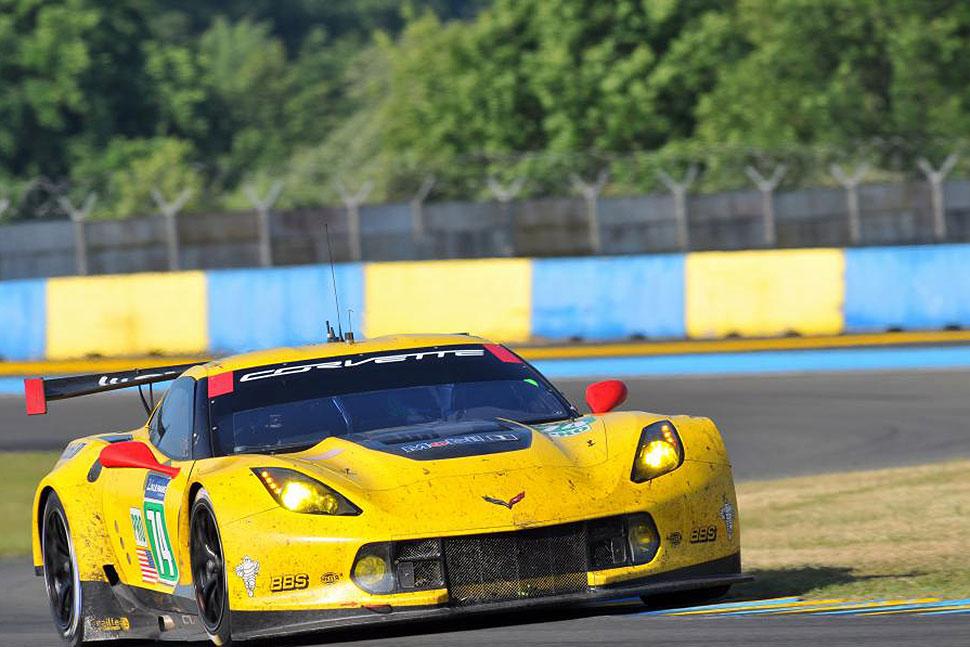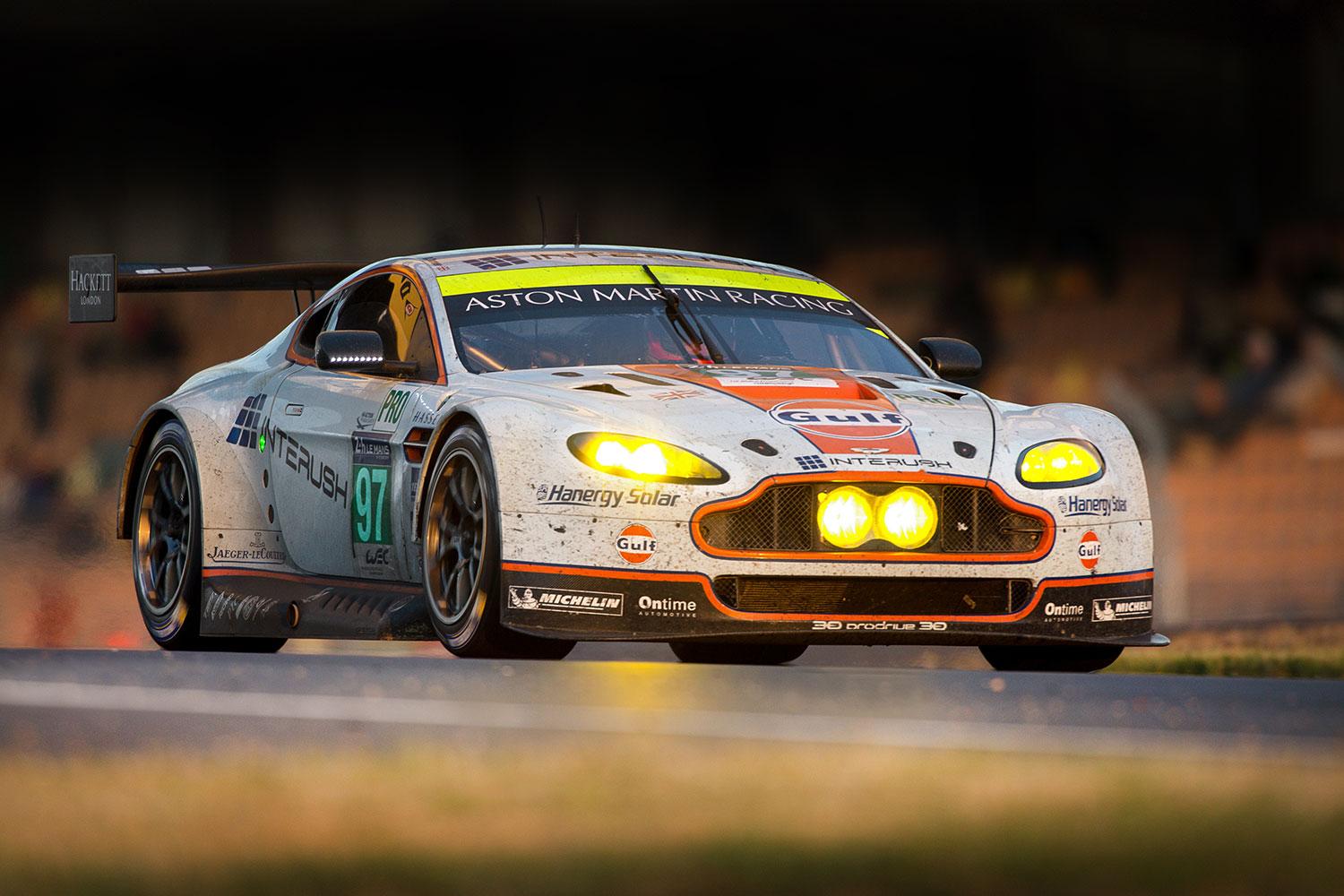
One car, three drivers, nine sets of tires, and 24 hours: the ingredients of the 24 Hours of Le Mans.
Run each year since 1923, the 24 Hours of Le Mans race was originally created to demonstrate the reliability of the automobile. Over the last 91 years, it has become the most significant motorsports event on the planet.
Just shy of 300,000 spectators bustled around the race grounds this year, eager to catch what is essentially year zero – a rebirth – of the aging event. New regulations brought new cars, new automakers, and reignited passions to the 24-hour race. June 14 was opening day in Le Mans, France, a small, indistinguishably European town that is annually overrun for the race. Also overrun are the town’s roads. The circuit is just shy of 8.5 miles around; the racers will drive it hundreds of times.
The sun was out and the sky was clear as the racers lined up in the starting grid this year, the teams and the spectators alike knowing that anything could happen. Pedigree, budget, and technology could all be nullified on the hallowed Le Mans circuit.
Over the next 24 hours, the cars would travel more than the distance between Los Angeles and New York. They would see speeds over 200 mph, face a blinding sunset, drive through tire blowouts and collisions, and watch for sudden rains.
And it always rains at Le Mans.
Crash
As a lifelong fan of motorsport, I’ve been to many events. I’ve been to Formula 1, NASCAR, local drag races, and karting events. I’d never been to Le Mans, but of all the events I had been to, nothing particularly exciting had ever occurred during qualifying.
Audi’s No. 1 car had crashed at over 215 mph, for a devastatingly total vehicle loss.
That meant, in order to compete with all three of its allowed cars, Audi would have to rebuild its No. 1 car over night, a simply staggering task. Harnessing all of its German magic, that’s exactly what the company did. By midnight that night, Audi had performed a virtual miracle and built a new No. 1 car from spares.
Contenders
On the morning of the race, battered but bandaged, reigning Le Mans champ Audi faced off against two formidable opponents: Toyota and Porsche.
A hybrid engine, in accordance with the new race rules, powers each of the LMP1 cars. Each hybrid, however, has its own bent.
Toyota entered 2014 Le Mans with twin TS040s. Powered by 3.7-liter gasoline V8s mated to a requisite hybrid system, the cars each produce as much as 986-horsepower, making them the fastest vehicles at Le Mans. Rather than onboard batteries, like road-going Toyota hybrids, the TS040’s hybrid system is capacitor-based.
While Toyota went gasoline V8, Porsche’s 919s were powered by gasoline burning, 500-horsepower, 2.0-liter V4s. The Porsches rely on lithium-ion batteries to store its hybrid electric energy. Unlike its competitors, Porsche determined the extra power provided by the batteries outweighed their significant mass.

Last but certainly not least, Audi entered 2014 Le Mans with a trio of diesel hybrids. The cars are all new for 2014, with V6 TDI engines that have been completely redesigned and enlarged to 4.0 liters and mated to a flywheel-based hybrid system.
Toyota was set up for straight-line speed. Audi was set for cornering. And Porsche, with its low-slung 919s, was a mix between the two.
The rest
Le Mans isn’t just LMP1 cars; there are several other classes as well, further complicating the race. Though LMP1 is the main event, other cars are running the 24 hours.
Beneath LMP1 there’s LMP2, GTE Pro, and GTE AM. The P2 cars are essentially older versions of the P1s, where the GTE Pro and AM classes are closer to road-going cars. So, if the race weren’t difficult enough, as the P1s round the track against each other, they’re dodging and passing modified versions of the Ferrari 458 Italia, Porsche 911, Corvette C7, and Aston Martin V8 Vantage.
Rain
The race started at 3 p.m. as blue, sunny skies began to emerge, with Toyota and Porsche leading the grid. Early on, the three LMP1 contenders jockeyed for first place. Not more than a few hours into Le Mans 2014, though, the rain started.
Bonanomi closed his helmet and wept, knowing Le Mans was over for him.
The racers remained cautious but also keen to keep pace. The rain saturation across the track mixed with the cars’ traction capabilities into a delicate dance between competition and collision. It seemed as though the racers were keeping their cars in control when catastrophe struck.
Trying to avoid a Toyota TS040, a pair of Ferraris going for a gap caused a three-car pileup. The Toyota and one of the Ferraris suffered only mild front-end damage. The No. 3 Audi R18 was not so lucky. It suffered severe front- and rear-end damage, including damage to the powertrain.
Driver Marco Bonanomi tried futilely for several minutes to get the No. 3 going again, knowing if he could get back to the garage he, just like Duval before him, would simply be down but not out.

After several minutes of revving with absolutely no movement, the Audi team called in the tow truck. Bonanomi closed his helmet and wept, knowing Le Mans was over for him — and his teammates assigned to car No. 3, Filipe Albuquerque and Oliver Jarvis. This left Audi cars No. 1 and No. 2 to compete for the win.
Defeat
After the rain dried up, racing returned to normal for the surviving cars. Audi, just like Toyota and Porsche, was down to two cars.
At nightfall around 10 p.m., Toyota took the lead with Audi and Porsche trading second and third. Having already driven more than 1,2000 miles, the cars, drivers, and mechanics were already drained but also only one third of the way through.
As the sun rose, with 10 hours left in the race, Audi and Porsche were left to battle for first.
Over the course of the night, the swift Toyotas solidified their position at the front, gaining a 2-minute lead over second place. That changed just around dawn.
As the sun began to peek over the horizon, the No. 7 Toyota suffered a wiring loom failure and came to a rest at the side of the circuit. When it was towed back to the garage, it, too, retired from the race.
As the sun rose, with 10 hours left in the race, Audi and Porsche were left to battle for first.
Power
Just after 5 a.m. the No. 2 Audi took the now-retired Toyota’s place at the head of the pack, with André Lotterer at the helm.
Almost unbelievably, just like the Toyota before it, disaster struck the leading Audi. As Lotterer increased his lead, a turbocharger and fuel injector failed. The No. 2 car was pulled into the garage, while Audi fans waited impatiently for its return.

Just over 23 minute elapsed before the car was pushed back out, which had all but removed it from the running, dropping it down to third place. In a race where the leaders are often separated by a 5-second margin, 23 minutes is an eternity.
This, then, was Porsche’s time to shine. Few expected the relative newcomer to 2014 Le Mans to lead going into the second day, but it did. Keen to solidify its place at the top of the leader board, Porsche put veteran driver Mark Webber behind the wheel to battle Audi’s Tom Kristensen of No. 1 Audi, the winningest Le Mans driver of all time, for first.
That’s when disaster struck again for Audi. The turbocharger on the No. 1 car failed – just as it had on the No. 2 R18. Suddenly Kristensen’s lead was dashed.
A full 17 minutes ticked by as Webber and Lotterer, who had been knocked to third, fought for first. Audi’s mechanics teams had been able to scrub 5 minutes off its turbo replacement job for two reasons: efficiency and burned hands.
The turbochargers are so hot during the race that severe burns are inevitable, even through work gloves. So not only did the team get more efficient for the second turbo swap, their hands had already been so burned by the first job that they no longer had to fight through the pain. Their nerves were already numbed.
Meanwhile, the cars destroyed the pavement at Le Mans. While Audi’s mechanics seared their fingers swapping the turbo swap on the No. 1 car, Lotterer set a new lap record for the 2014 race at 3 minutes, 22.567 seconds. Not only was this the fastest of 2014, it was faster than any 2013 lap times – using 25 percent less energy.
Curse
Despite Lotterer’s best efforts and incredible lap times, it seemed his 23-minute deficit simply couldn’t be overcome.
That’s when the No. 20 Porsche suddenly went sluggish. Just a few minutes behind the wheel, hoping to steal first place, Webber’s car failed and had to be nursed back to the garage.
For the last several laps, the Audis drove side-by-side.
Not 40 minutes later, watching from the paddock, I noticed the leading Porsche didn’t sound right as it passed. On the next lap, it pulled into the pits, only to be yanked into the garage, never to return again.
Several minutes went by before No. 14 Porsche had to retire its second and final car from 2014 Le Mans. This gave No. 2 Audi the lead, with its brother car, the No. 1, at second.
Flag
For the last several laps, the Audis drove side-by-side, as all the teams ran out of their garages and climbed up on the pit wall to watch the last few moments of the 24 Hours of Le Mans 2014.
As the clock struck 3 p.m. and the Audis finished their last lap, pandemonium broke out at the Audi end of the paddocks. Audi flags were handed out and the Audi team members jumped and waved their arms.

As they crossed the finish line, the drivers opened their doors and waved to the crowds. Surprisingly, the Porsche mechanics had repaired the No. 14 enough for it to slowly lap the track, following the champion Audis.
Historically, the winning cars take a partial parade lap at the end of the Le Mans, the Audis, however, took an entire lap of the circuit – fitting for this new year zero.
Once the Audis returned to the garage, the drivers and head of Audi motorsport, Dr. Wolfgang Ullrich, jumped on the No. 1 and No. 2 cars and drove to the end of the pits and the podium. There, to the soundtrack of thousands of screaming fans, Marcel Fässler, André Lotterer, and Benoît Tréluyer were presented with the 24 Hours of Le Mans trophy.
It was one of the most exciting events in Le Mans history. But beyond that, its results will have far-reaching ramifications for forthcoming race seasons and for consumer car technology. In fact, the technology developed for the 2014 Le Mans, including laser headlights and electric turbochargers, is already reaching the street.
In the days to come, we’ll look more closely into the significance and ramifications of the 2014 Le Mans results, so be sure to check back soon.












